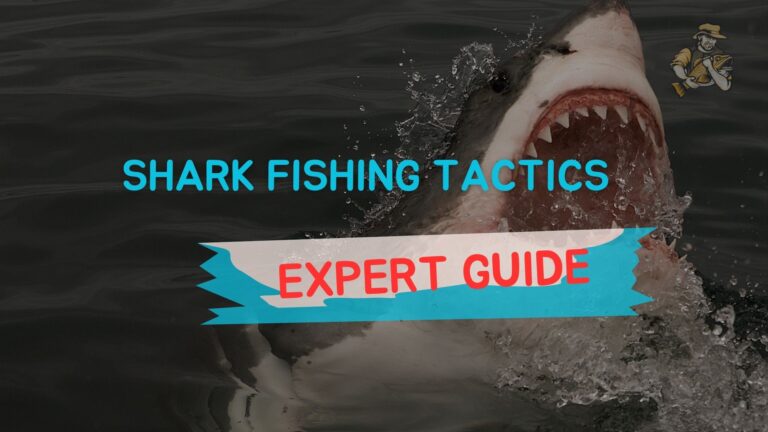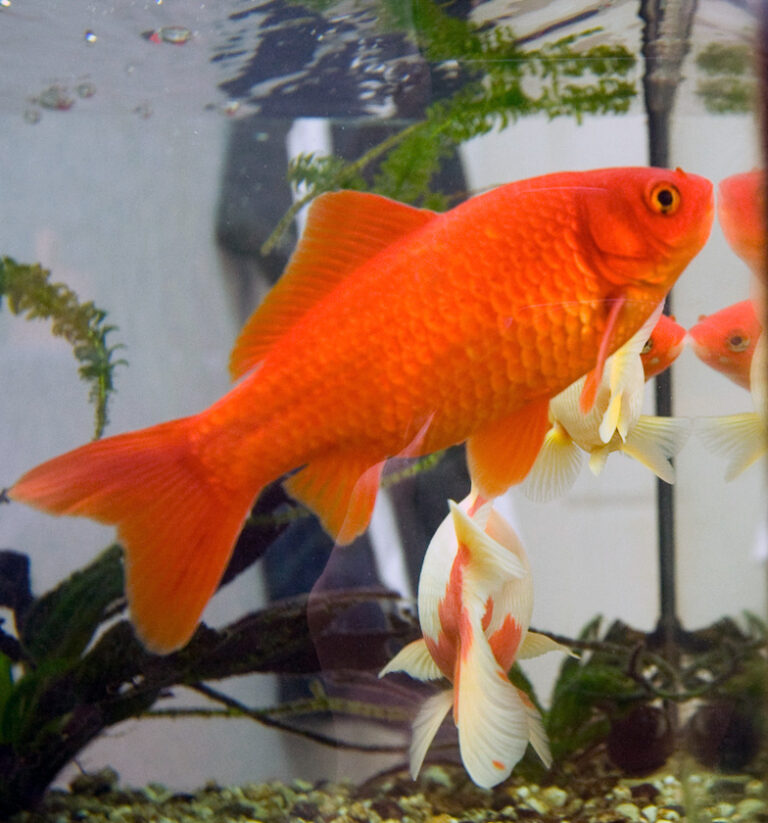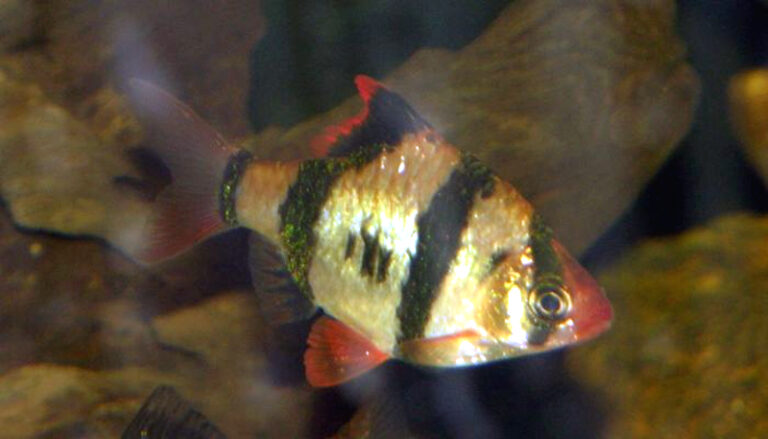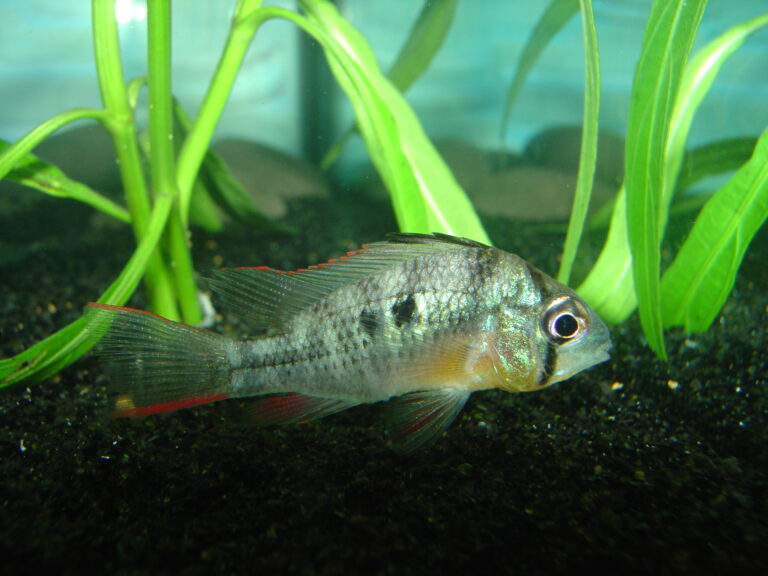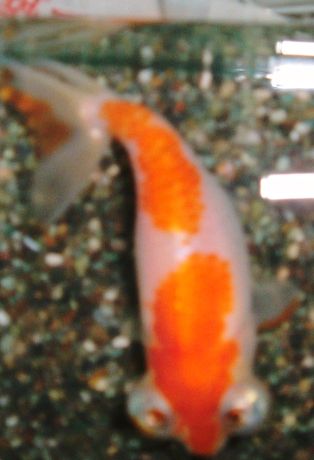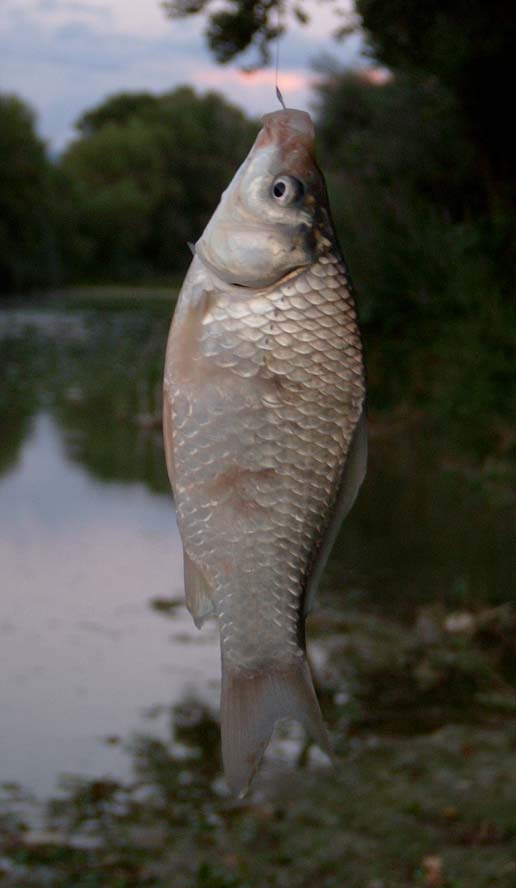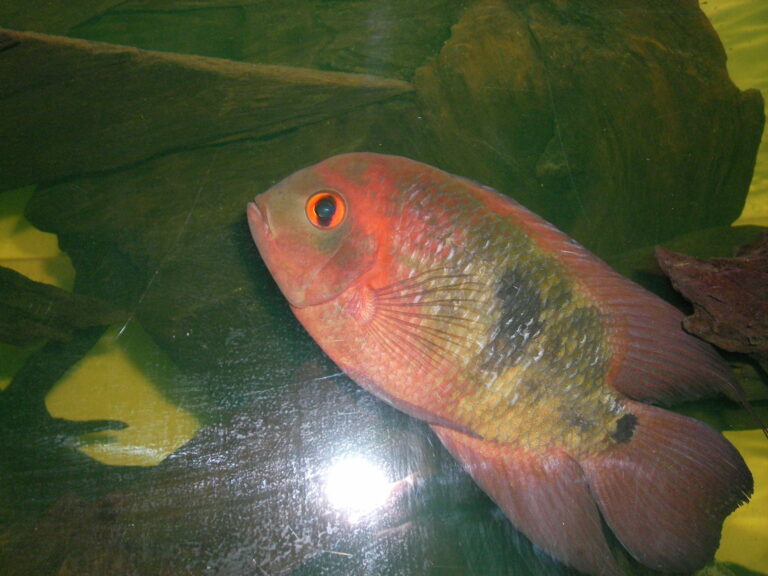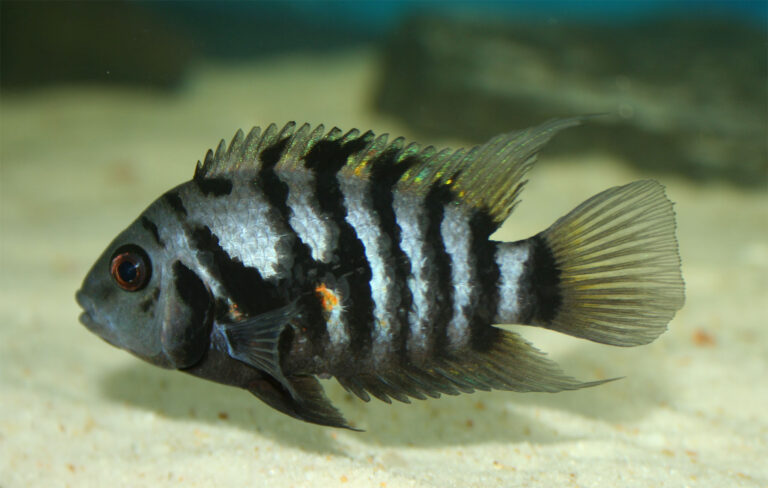Baja Sportfishing: Marlin, Tuna, and Dorado Tactics
By Adam Hawthorne | Last Modified: May 18, 2025
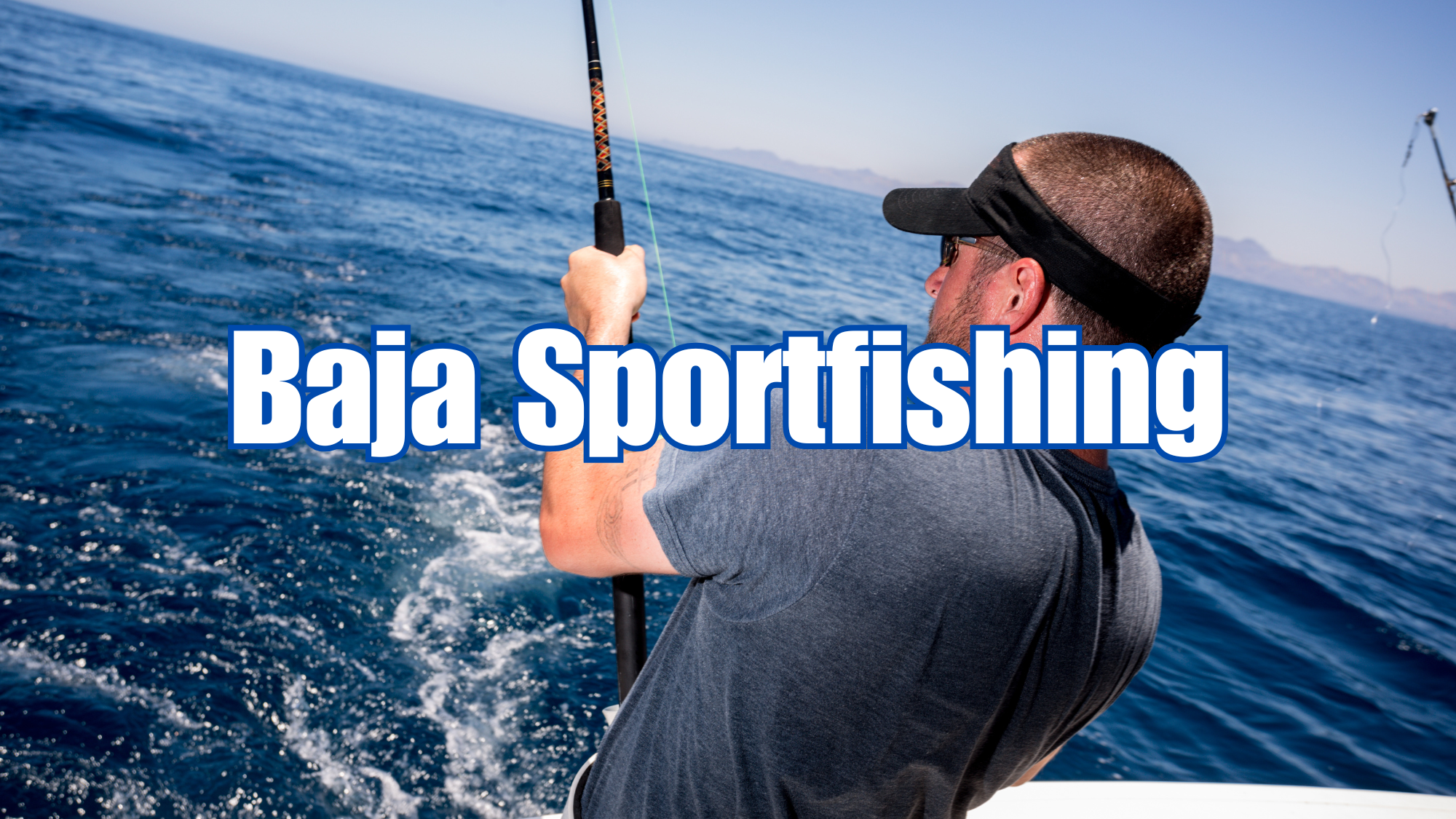
The first time I ventured into Baja sportfishing waters, I did almost everything wrong. I chartered a boat out of Cabo during what I thought was prime season (it wasn’t), brought completely inappropriate tackle (too light), and spent most of the day getting seasick instead of catching fish. That was back in 2009, and I’ve since made the pilgrimage to the Baja peninsula almost annually – learning something new each time, often the hard way.
What makes Baja sportfishing so special isn’t just the incredible variety of gamefish or the stunning backdrop of desert meeting sea. It’s the rich fishing culture, the captains who’ve spent generations mastering these waters, and those magical moments when everything comes together perfectly – like when my fishing buddy Dave and I hooked into seven yellowfin tuna in 20 minutes off La Paz during an unusually cool morning in August 2022.
I’ve compiled this guide based on my own mistakes, triumphs, and the hard-earned wisdom shared by local captains who eventually took pity on this gringo from Michigan.
Understanding Baja’s Sportfishing Landscape
Baja California is that long finger of land extending south of California, with the Pacific Ocean on one side and the Sea of Cortez (Gulf of California) on the other. This creates two completely different fishing environments with unique strategies needed for each.
The Pacific side has cooler water, bigger swells, and tends to hold larger marlin and tuna further offshore. The Sea of Cortez side offers warmer, calmer waters with incredible structure fishing closer to shore and numerous islands creating fish-holding habitat. My preference has always been the Sea of Cortez simply because I can get seasick on a pool float, but some of my best marlin action has admittedly come from the Pacific side near Magdalena Bay.
I’ll never forget my first trip to the East Cape – that area between La Paz and Cabo. The water was that impossible blue that looks fake in photographs, and our captain (Miguel, who I still fish with when I visit) pointed out volcanic formations where the huge roosterfish would patrol. Within an hour, I’d hooked and lost the biggest rooster of my life – the sight of that distinctive dorsal fin cutting through the water still haunts me.
Key Baja Sportfishing Destinations
While I’ve fished most of the major Baja hot spots, each area specializes in different species and techniques:
- Cabo San Lucas: The tourist mecca at the peninsula’s tip. Great for blue and black marlin, with excellent striped marlin action from November-January. Honestly though, it’s gotten ridiculously crowded over the years – I’ve had better experiences slightly away from Cabo itself.
- East Cape: My personal favorite area. The communities of Los Barriles and Buena Vista offer world-class fishing without the crowds. Known for big dorado (mahi-mahi), yellowfin tuna, wahoo, roosterfish from shore, and consistent marlin action. I’ve had exceptional success with yellowfin just north of Punta Pescadero, especially in early September.
- La Paz: The capital city of Baja California Sur offers amazing access to islands like Espiritu Santo and San Jose. Legendary for its dorado fishing in summer and fall. My buddy Frank once caught a 65-pound bull dorado here that took nearly an hour to land.
- Loreto: Famous for its access to “yellowtail alley” and as a jumping-off point to Isla Carmen and Isla Coronado. The winter yellowtail jigging here can be insane when conditions align. Don’t make my mistake of bringing only light tackle – these fish will humble you.
- Magdalena Bay: On the Pacific side, this massive protected bay system offers incredible fishing for striped marlin, particularly in fall. The transportation logistics can be challenging, but the fishing makes it worthwhile. I’ve only fished it twice but had 8-12 striped marlin raises per day both times.
I could write an entire article on each destination, but I’ll focus on species-specific tactics that work throughout Baja.
Marlin Tactics That Actually Work in Baja
Marlin deservedly hold a special place among Baja sportfishing targets. These magnificent billfish draw anglers from around the world, and Baja waters hold several species: blue, black, and striped marlin. While blues and blacks get all the press for their size, striped marlin are actually more common and provide incredible action.
Finding Marlin in Baja Waters
In 2018, I spent five straight days targeting blue marlin out of Cabo with a well-known captain (who shall remain unnamed). He insisted on running 35+ miles offshore each day to the “blue marlin grounds” despite my repeated suggestions that we try different areas. We saw exactly zero blue marlin. On the final day, I convinced him to try an area 12 miles in a different direction where I’d spotted birds working. We raised four striped marlin in the first hour.
The point? Even experienced captains get locked into patterns. Here’s what actually works for finding marlin:
- Temperature breaks: Marlin often congregate along temperature changes of 2-4 degrees. I’ve found striped marlin particularly fond of the 74-76°F range, though this varies seasonally. Most boats now have temperature sensors – pay attention to them.
- Bait concentrations: Rather than running to where marlin “should be,” find the bait. Flying fish, sardines, or skipjack tuna will attract marlin. The year I fished with Captain Luis out of East Cape, we spent the first hour catching skipjack for live bait, and it made all the difference for blue marlin later.
- Birds and porpoise: Working birds almost always signal feeding activity below. Similarly, porpoise often travel with yellowfin tuna, which in turn attract marlin. Some of my best marlin days started by finding and staying with porpoise schools.
- Structure and dropoffs: While less critical than for other species, underwater structures, seamounts, and sharp dropoffs create upwellings that concentrate bait and gamefish. I’ve had success finding striped marlin along the edges of banks like the Golden Gate and Gordo Banks.
- Current lines and floating debris: Anything floating (palm fronds, logs, trash) can create mini-ecosystems that attract baitfish and eventually marlin. My best Baja dorado day ever came from working a floating pallet we spotted by chance.
Marlin Presentations That Get Results
I’ve experimented with countless marlin tactics over the years, and here’s what consistently produces results:
- Trolling spread basics: A standard spread that works well consists of two short rigger baits, two long rigger baits, and a center shotgun lure set furthest back. This five-lure pattern covers a wide area efficiently. For striped marlin in Baja, I’ve had exceptional success with blue/white combinations and smaller lures (8-10 inches) than you might expect.
- Lure selection reality check: While captains often have “lucky lures,” I’ve found particular colors work at different times. Early morning: darker purple and black lures. Midday sun: blue/white, green/yellow. I had one exceptional day using pink/white lures exclusively when nothing else worked. Don’t get locked into one pattern.
- Bait and switch tactics: This more advanced approach involves getting marlin interested with teasers, then switching to a bait when they appear. Our 2019 trip to Magdalena Bay produced three blue marlin using this approach. The mistake most people make is pulling the teaser too quickly – you need to give the mate time to deploy the bait.
- Live bait approaches: Nothing beats a properly bridled live skipjack or bonito for blue marlin. The key is keeping the bait lively and swimming naturally. I’ve seen anglers roughly handle baits, then wonder why they don’t get strikes. Treat those baits like the precious resources they are.
- Speed considerations: Generally, I’ve found marlin prefer a faster troll than many other gamefish – 8-9 knots works well, sometimes faster for blue marlin. However, there are days when slowing to 6-7 knots makes all the difference. If you’re not getting strikes, changing speed costs nothing and often triggers action.
One technical aspect many anglers overlook is hook selection. I learned from a crusty old captain in Loreto to use 9/0 or 10/0 circle hooks exclusively for marlin. Despite the counterintuitive feel of not setting the hook, the hookup percentage dramatically improves. My first two Baja trips, I lost 5 of 7 marlin using J-hooks. After switching to circles, my landing ratio improved to above 80%.
Yellowfin Tuna Techniques Unique to Baja
Yellowfin tuna hold a special place in my heart – and not just because they’re delicious. Nothing in fishing compares to that first blistering run when a big yellowfin realizes it’s hooked. I’ve had 100+ pound yellowfin strip 300 yards of line in seconds, a humbling reminder of their raw power.
Locating Yellowfin in Baja Waters
Baja’s yellowfin can be frustratingly here-today-gone-tomorrow. Understanding their movement patterns has taken me years to figure out:
- Porpoise schools: The relationship between spinner dolphins and yellowfin tuna is well-known but often poorly executed by anglers. The trick isn’t just finding porpoise, but staying with them. I’ve watched boats give up after 15 minutes, while persistence often pays off after an hour or more. That November trip with Tommy in 2021, we stayed with a porpoise pod for nearly three hours before suddenly hitting a 20-fish yellowfin bite that lasted 45 minutes.
- Commercial fleet movements: While this sounds obvious, watching where commercial tuna boats are working tells you everything. On three different trips, I’ve had captains ignore the commercial fleet because they “had a better spot.” Those were three days of poor fishing. My suggestion: if you see the commercial fleet concentrated, that’s where you should be.
- Deep water upwellings: Particularly in the Sea of Cortez, underwater seamounts create upwellings that concentrate bait and tuna. These spots change seasonally but are fairly consistent year to year. Some captains closely guard these GPS coordinates, and for good reason.
- Thermoclines and temperature breaks: Similar to marlin, yellowfin tuna often concentrate along temperature changes. The difference is they’ll often hold UNDER the warm surface water, which is why finding the thermocline depth can be critical. One June day off Cerralvo Island, we weren’t catching until we got our baits down to the 120-foot depth where the temperature dropped 4 degrees.
- Bird activity: Working birds almost always signal feeding activity. The difference between amateur and experienced anglers is recognizing what TYPE of bird activity signals yellowfin versus skipjack or bonito. Frantic, concentrated diving often means skipjack. Measured, sporadic diving by frigates or boobies frequently indicates yellowfin.
Proven Yellowfin Tuna Tactics
Through trial and error (mostly error), I’ve refined my yellowfin approach:
- Chunk fishing supremacy: While most boats troll for yellowfin, I’ve had phenomenal success with chunk fishing – particularly when tuna are being finicky. The approach is simple: drift with a current line, establish a chunk trail, and fish baits at different depths. This April, we caught seven 40-80 pound yellowfin chunk fishing when boats trolling around us caught nothing.
- Live bait techniques: Nothing beats a live sardine, caballito (small jack), or goggle-eye for Baja yellowfin. The critical factor is hook size – many anglers use hooks too large, which impedes the bait’s swimming action. I’ve settled on 3/0 to 5/0 circle hooks depending on bait size. My biggest-ever Baja yellowfin (163 pounds) came on a modestly-sized live goggle-eye on 60-pound test.
- Kite fishing advantages: In certain conditions, particularly when tuna are feeding but boat-shy, kite fishing is devastating. I watched a boat out of San Jose del Cabo land 11 yellowfin over 100 pounds in a single day using this method. The challenge is wind conditions need to cooperate.
- Cedar plugs and feathers: Sometimes simple works best. Old-school cedar plugs and feathered jigs still produce, especially when tuna are feeding aggressively. I keep a rod rigged with a green/yellow feather jig ready at all times for when we encounter breaking fish. The key is retrieval speed – vary it until you find what works that day.
- Fluorocarbon leaders always: Yellowfin can be surprisingly leader-shy, especially in heavily fished areas. I never go below 40-pound fluorocarbon, but have seen days where that makes the difference between constant action and nothing. Keep several leader strengths ready.
One memorable day off Isla Espiritu Santo, we located a massive school of yellowfin feeding on the surface. Every boat in the area converged and started trolling through them – with limited success. Our captain, Antonio, had us deploy live baits instead, slow-trolling them behind the boat. We landed 12 yellowfin between 30-70 pounds while nearby boats struggled. The lesson? When everyone zigs, consider zagging.
Dorado (Mahi-Mahi) Strategies For Consistent Success
No fish symbolizes Baja sportfishing better than the brilliant, acrobatic dorado (mahi-mahi). These magnificent gamefish grow quickly, fight hard, and are among the most beautiful creatures in the ocean. They’re also delicious, which explains their popularity.
I can still vividly recall my first bull dorado – a 48-pounder caught near the Bajo seamount off La Paz. The electric blue, green and gold colors as it jumped repeatedly beside the boat seemed unreal, like something from a tropical fish tank rather than a wild gamefish.
Finding Dorado In Baja Waters
Dorado have fairly predictable habits once you understand them:
- Floating structure obsession: Dorado are absolutely addicted to floating objects – palm fronds, logs, trash, or man-made fish aggregating devices (FADs). The most productive pattern I’ve found is running from one floating object to another. In 2017, we found a floating pallet off Punta Arena that held over 30 dorado.
- Current lines and color changes: Dorado frequently hunt along current boundaries where water colors change. These areas concentrate baitfish and create natural feeding zones. I’ve found this particularly true along the edges of underwater structures like the famous 88 Bank and 95 Bank near La Paz.
- Temperature preferences: While dorado tolerate a range of temperatures, I’ve found the best action between 74-84°F. In the Sea of Cortez, this typically means May through October are prime months, with July-September being peak season. My June trips have consistently outperformed October trips, contrary to what many guides will tell you.
- Sargasso weedlines: In certain areas of Baja, particularly the Pacific side, sargasso weed formations create extensive habitat for juvenile fish, which in turn attract dorado. Working the edges of these weedlines systematically has produced some of my best numbers days.
- Tuna relationships: For reasons not entirely clear, dorado often associate with tuna schools. Some of my best Baja dorado days started by finding yellowfin tuna activity, then discovering the dorado holding slightly above or behind the tuna school. This is especially true around porpoise pods.
Dorado Tactics That Consistently Produce
Through years of trial and error, these approaches have proven most effective:
- Live bait supremacy: Nothing – and I mean nothing – outperforms a lively sardine, caballito, or goggle-eye for trophy dorado. The key is using slightly lighter tackle than you might for tuna, allowing the bait to swim naturally. I typically use 30-40 pound fluorocarbon leaders for dorado rather than the 50-60 pound I might choose for tuna.
- The keep-one-in-the-water trick: Dorado are incredibly school-oriented. When you hook one, try to keep it in the water boat-side rather than immediately boating it. This often keeps the school nearby, allowing for multiple hookups. I’ve seen entire dorado schools follow a hooked fish right to the boat.
- Color patterns that trigger strikes: While dorado hit a variety of lures, certain color combinations consistently outperform: blue/white, green/yellow, and pink/white. I always have rigged ballyhoo with skirts in these color combinations ready for trolling. When dorado are being finicky, I’ve had excellent success with smaller lures than you might expect – 4-5 inch skirted ballyhoo rather than 7-8 inch.
- Specialized dorado teasing: A technique many tourist boats don’t employ is dedicated teasing for dorado. Using hookless teasers to whip dorado into a feeding frenzy, then deploying baited hooks, can turn a decent day into an exceptional one. I watched Captain Manuel from La Paz employ this to produce 26 dorado in a single morning.
- Speed adjustments: Unlike marlin that generally prefer faster trolling speeds, dorado often respond better to slower presentations around 5-7 knots. I’ve found this particularly true in heavily fished areas where they’ve seen plenty of lures screaming by at higher speeds.
I’ll never forget a day in 2020 fishing with two buddies near Isla Cerralvo. We located a piece of plywood floating about 15 miles offshore. The first pass produced a double-header of 30-pound class bull dorado. Rather than leaving after catching “enough,” we stayed with that piece of wood for three hours. The result was 18 dorado (mostly released), including a 62-pound monster that currently hangs on my wall. The lesson? When you find a productive structure, work it thoroughly before moving on.
Seasonal Patterns for Baja Sportfishing Success
One of the most common questions I get is “When’s the best time to fish Baja?” The honest answer is: it depends on your target species and tolerance for weather conditions. Having fished Baja in every month except February, I’ve developed a pretty good sense of the seasonal patterns.
Winter (December-February)
Winter offers some unique opportunities despite cooler waters:
- Striped marlin concentrations: December through February can offer the best striped marlin action of the year, particularly around Cabo San Lucas and Magdalena Bay. These fish follow migrations of squid and sardines. In January 2019, we raised 11 striped marlin in a single day off Cabo, landing 6.
- Yellowtail jackpot: Loreto and the islands north of La Paz become yellowtail central during winter months. These powerful jack relatives provide exceptional jigging and live bait action. That trip with my son Tommy in 2022 produced 14 yellowtail between 18-35 pounds jigging butterfly jigs near structure.
- Whale watching bonus: Winter trips coincide with the gray whale migration, adding a spectacular nature component to fishing trips. Seeing these massive creatures breach while you’re fishing creates memories beyond just catching.
The major drawback to winter fishing is less predictable weather, particularly on the Pacific side where winds can create challenging conditions. I’ve had December trips with glass calm mornings and others where we couldn’t leave the harbor for two days.
Spring (March-May)
Spring represents a transition period with some exceptional opportunities:
- Early yellowfin arrival: By late April into May, the first waves of yellowfin tuna typically arrive. These early-season fish are often exceptional quality. My largest-ever yellowfin from Baja came in early May off the East Cape.
- Roosterfish from shore: Spring brings roosters into shallow water, creating the possibility for one of fishing’s greatest thrills – sight-casting to cruising roosters from the beach. The stretch from La Ribera to Punta Colorada gets my vote for the best rooster fishing from shore.
- Jack crevalle abundance: While not as glamorous as other species, the hard-fighting jack crevalle invade shallows during spring. These bulldogs in the 15-30 pound class provide exceptional light tackle sport. We had a blast targeting them on 12-pound spinning gear one April trip.
Spring offers the advantage of good weather with fewer tourists than peak season. Water temperatures are transitional, so having multiple fishing options planned is wise.
Summer (June-September)
Summer is prime time for most offshore Baja sportfishing:
- Blue marlin season: July through September offers the best shot at trophy blue marlin, particularly around the Gordo Banks and off Cabo. Water temperatures reach their peak, drawing in these apex predators. My only “grander” blue (approximately 650-pounds, released) came in August off Punta Gorda.
- Dorado bonanza: Summer is undoubtedly prime time for dorado throughout Baja, with July-September being absolute peak season. The warm blue water fills with floating debris after summer storms, creating perfect dorado habitat.
- Yellowfin consistency: While spring can produce larger model yellowfin, summer typically offers the most consistent action, particularly around offshore banks and porpoise schools. We had three consecutive days of 15+ yellowfin (30-70 pounders) one August trip out of La Paz.
The downside to summer is heat, crowds, and occasionally, hurricanes. August and September carry hurricane risk, though direct hits are relatively rare. The heat can be brutal – I’ve experienced 110°F days on the East Cape where even the boat deck became too hot to touch barefoot.
Fall (October-November)
Fall might be my favorite overall season for Baja sportfishing:
- Trophy yellowfin potential: October and November can produce some of the year’s largest yellowfin tuna, particularly around the Cortez Bank and seamounts near the East Cape. These fish are often quality over quantity – fewer bites but bigger fish.
- Continued marlin presence: Both blue and striped marlin remain available in good numbers, though blue marlin typically begin transitioning out by late November. Striped marlin action often improves as waters cool slightly.
- Perfect temperature range: Fall typically offers ideal water temperatures in the 75-82°F range – comfortable for anglers and still warm enough for pelagic species. The air temperatures moderate as well, making for more pleasant fishing conditions.
- Wahoo opportunities: While available year-round, fall seems to offer the best wahoo action, particularly around structure and islands. These speed demons provide exceptional sport and table fare. My largest Baja wahoo (68 pounds) came trolling a Rapala X-Rap Magnum 30 near San Luis Bank in early November.
The biggest advantage to fall trips is diminished crowds after summer tourists depart. You’ll find better charter availability, less pressure on fishing spots, and often better service.
Tackle Recommendations from Hard Experience
I’ve learned tackle lessons the hard way in Baja – from broken rods to straightened hooks and heartbreaking lost fish. Here’s what actually works based on painful experience:
Rods and Reels That Survive Baja Conditions
The salt, sun, and powerful fish in Baja demand quality equipment:
- Marlin setups: For blue and black marlin, I’ve settled on 50-80 class conventional setups. My go-to is an Okuma Makaira 50W paired with a Calstar 760H. For striped marlin, 30-50 class is perfect – a Shimano Talica 25 on a Seeker Black Steel 6470 has been my reliable choice. Trying to go lighter might seem sporty but often results in exhausted fish that don’t survive release.
- Yellowfin tuna tackle: For yellowfin under 100 pounds, a 30-class setup works well – my Shimano Talica 16 on a Phenix M1 stands up to punishment. For larger models, I step up to 50-class equipment. Lever drag reels with smooth, powerful drags are essential – I’ve seen too many inferior reels fail under the pressure of a running yellowfin.
- Dorado equipment: For average dorado (15-30 pounds), I enjoy 20-pound class spinning gear – a Shimano Saragosa 8000 on a medium-heavy 7′ rod provides the perfect balance of sport and control. For larger bull dorado, 30-pound conventional tackle ensures you’re not underpowered. I lost a monster bull in 2014 being stubborn with light tackle – a mistake I haven’t repeated.
- Backup essentials: I always bring at least one backup of critical components – especially drags and handles. That expensive fishing trip is ruined quickly when a reel handle breaks 20 miles offshore. I learned this lesson watching a guy’s custom rod snap on day one of a five-day trip.
Terminal Tackle That Won’t Let You Down
The connection between you and the fish demands the best components:
- Line considerations: For leader material, I exclusively use fluorocarbon in 40-80 pound test depending on target species. For yellowfin, I never go below 50-pound. For main line, I prefer hollow-core spectra in 60-80 pound test, which allows for creating your own wind-on leaders. I watched a friend lose a trophy yellowfin to an inferior knot between mono top shot and braid – now I splice everything.
- Hook selection wisdom: For live bait applications, I’ve become a complete convert to circle hooks – 7/0 to 10/0 for marlin, 5/0 to 7/0 for tuna, and 3/0 to 5/0 for dorado. My hookup percentage improved dramatically after this switch. For trolling lures, I prefer single, strong 7/0-9/0 hooks over doubles or trebles – fewer missed hookups and easier releases.
- Swivels and connections: I only use ball bearing swivels rated at least 150% of my line strength. Cheap swivels fail catastrophically under the pressure of a running pelagic fish. I’ve also learned to check and replace swivels after each significant catch – even quality swivels can sustain invisible damage.
- Lure selection strategy: Rather than bringing dozens of options, I focus on proven performers: skirted ballyhoo in blue/white and pink/white for marlin; cedar plugs and feather jigs for tuna; and smaller skirted lures and hoochies for dorado. Having caught hundreds of fish on these basics, I’m convinced lure confidence matters more than endless variety.
One critical lesson I’ve learned is bringing tools for emergency repairs. A quality crimping tool, spare crimps, extra line, and hook sharpening tools have saved numerous fishing days when things went sideways.
Charter Selection: Finding Captains Who Actually Produce
Having fished with dozens of Baja captains ranging from world-class to “how do you find the dock?” I’ve developed a system for separating the real deals from the disappointments.
Red Flags When Booking Charters
Watch for these warning signs when researching Baja fishing charters:
- Guaranteed catches: Any captain promising specific results is selling you a fantasy. Fishing involves too many variables for guarantees. I prefer honest captains who say “we’ll work hard to find fish” over those promising limits of specific species.
- Bargain basement pricing: In Baja sportfishing, you generally get what you pay for. That cut-rate charter is usually cheap for a reason – older equipment, less experienced crew, or inferior bait. I learned this lesson with a $350 “deal” in Cabo that featured broken equipment and a captain who barely spoke English.
- Lack of specific knowledge: When inquiring about conditions or techniques, vague responses signal a problem. Good captains can discuss specific areas, seasonal patterns, and technique adjustments. I once canceled a trip after a captain couldn’t tell me what water temperatures had been running that week.
- No catch photos or dated images: Legitimate operations have recent catch photos. Be wary of websites showing only the same few fish photos from years ago. I now specifically ask when their most recent significant catches occurred.
- Unclear about equipment provided: Professional operations clearly state what tackle, gear, and amenities are included. Ambiguity here often leads to disappointment or unexpected charges. I once boarded a charter to discover their “provided gear” consisted of two weathered boat rods with questionable reels.
Finding Quality Baja Sportfishing Charters
These approaches have led me to exceptional fishing experiences:
- Research recent fishing forums: Forums focused on Baja fishing provide recent, unfiltered reports from actual anglers. I’ve found some of my best captains through recommendations in these communities.
- Local tackle shop intelligence: The local tackle shops know which captains consistently produce. I make a point to visit these shops upon arrival and ask directly, “Who’s been catching fish this week?” They typically know exactly which boats are producing and which are struggling.
- Small-fleet operations: I’ve had my best experiences with operations running 2-4 boats rather than massive fleets. These smaller outfits often feature owner-operators more invested in customer satisfaction. Captain Jorge’s two-boat operation in Los Barriles has outfished larger fleets consistently in my experience.
- Booking directly vs. hotel services: Whenever possible, I book directly with captains rather than through hotel concierge services, which often take substantial commissions and may promote preferred partners rather than top performers.
- The dock walk advantage: If time permits, nothing beats visiting the marina the afternoon before fishing. Observing which boats return with happy customers (and fish) tells you everything. I’ve changed bookings after dock walks revealed operations that looked great online but showed poorly in person.
What I’ve learned is that great captains in Baja are craftsmen who take immense pride in their work. They maintain spotless boats, quality tackle, and have crews who operate with practiced precision. They rarely need to advertise heavily because repeat business and word-of-mouth keep them busy.
Essential Gear Beyond Tackle
After countless Baja trips, I’ve refined my packing to include these non-fishing essentials:
- Sun protection arsenal: The Baja sun is punishing. I bring wide-brimmed hats, multiple high-SPF sunscreens (including zinc oxide for nose and ears), sun gloves, and lightweight long-sleeve performance shirts. I watched my brother-in-law Steve suffer second-degree burns on a Cabo trip because he thought his Michigan summer tan would protect him. It didn’t.
- Seasickness precautions: Even if you “never get seasick,” Baja might humble you. I bring multiple prevention options: prescription patches, ginger supplements, wristbands, and non-drowsy medication. Using medication preventatively (night before and morning of fishing) works much better than waiting until symptoms start.
- Proper footwear: Boat shoes with non-marking, non-slip soles are essential. I prefer closed-toe models since I’ve witnessed too many painful encounters between open toes and fishing gear. White or light-colored soles prevent marking boat decks, which captains appreciate.
- Insulated fish bags: If you plan to keep fish for consumption, bring a quality insulated kill bag. Many operations provide these, but having your own ensures proper care for your catch. After watching a beautiful tuna spoil in inadequate ice on a hot day, I never travel without my own.
- Camera protection: Baja boats involve water, salt, and fish slime – all enemies of electronics. A waterproof camera or phone case with floating capability has saved my photography multiple times. I now use a simple lanyard system after watching a friend’s $1,000 camera disappear into the Sea of Cortez.
- Multi-tool necessity: A quality fishing multi-tool stays on my belt in Baja. For cutting line, adjusting equipment, or handling unexpected situations, it’s invaluable. The subtle difference between average and great tools becomes apparent when you’re trying to remove a deep hook or cut heavy leader under pressure.
- Soft-sided cooler: For bringing lunch, drinks, and snacks onboard. Hard coolers take up excessive space and slide around dangerously in rough water. A quality soft cooler with a waterproof bottom holds ice all day while conforming to available storage space.
One essential that’s saved multiple trips: good polarized sunglasses with keeper straps. I favor amber lenses for their versatility in varying light conditions. The difference quality polarization makes in spotting fish, structure, and floating debris is remarkable. I watched my fishing partner Miguel spot a floating log holding dorado nearly a half-mile away while I saw nothing until we were much closer.
Baja Sportfishing Regulations and Etiquette
Understanding local regulations and customs enhances everyone’s experience:
Mexican Fishing Regulations
- Licensing requirements: Everyone needs a Mexican fishing license, available online through CONAPESCA’s official site or from many charter operations. The common misconception that licenses are included with charters isn’t always true – verify this when booking.
- Bag limits reality: Mexico enforces bag limits for conservation, particularly for billfish. Currently, it’s one marlin per angler per day, with specific limits for other species. These regulations change periodically, so verify current rules before your trip.
- Protected species awareness: Certain species receive complete protection, including roosterfish in some regions and all billfish under minimum sizes. I’ve seen unfortunate situations where tourists insisted on keeping fish that should have been released.
- Tournament special rules: Fishing during tournament season (typically May-November in various locations) means additional restrictions in certain areas. If your trip coincides with a major tournament, expect crowded prime fishing grounds and special regulations.
Baja Fishing Etiquette
- Respecting working grounds: When you find productive water, maintaining appropriate distance from other boats is essential. The generally accepted minimum is 150 yards, though more is better. I’ve watched shouting matches erupt when tourist boats crowded local commercial fishermen.
- Tipping expectations: Quality service deserves recognition. Standard practice is 15-20

Meet Adam Hawthorne
I’m a lifelong fishing enthusiast who’s spent years exploring rivers, lakes, and oceans with a rod in hand. At Fishing Titan, I share hands-on tips, honest gear reviews, and everything I’ve learned about fish and ocean life, so you can fish smarter and enjoy every cast.
Share:

Meet Adam Hawthorne
I’m a lifelong fishing enthusiast who’s spent years exploring rivers, lakes, and oceans with a rod in hand. At Fishing Titan, I share hands-on tips, honest gear reviews, and everything I’ve learned about fish and ocean life, so you can fish smarter and enjoy every cast.
Related Articles
-
7 Shark Fishing Tactics That Actually Work (Expert Guide)
Shark fishing remains one of those bucket-list experiences that separates casual anglers from the truly adventure-hungry. But here’s the truth – most folks trying to…
-
Telescope Goldfish
The Telescope Goldfish (Carassius auratus) represents one of the most distinctive and recognizable varieties of fancy goldfish in the aquarium trade. Distinguished by its characteristic…
-
Tiger Barb
The Tiger Barb (Puntigrus tetrazona) stands as one of Southeast Asia’s most recognizable freshwater cyprinids, distinguished by its vibrant golden-orange coloration and distinctive black vertical…
-
Bolivian Ram
The Bolivian Ram (Mikrogeophagus altispinosus) stands as one of South America’s most captivating cichlid species, representing a prime example of adaptive evolution within the diverse…
Fish Species
-
Celestial Eye Goldfish
The Celestial Eye Goldfish represents one of the most distinctive varieties within ornamental aquaculture, known scientifically as Carassius auratus. This remarkable goldfish cultivar displays upward-facing…
-
Goldfish
The goldfish (Carassius auratus) stands as one of the most culturally significant and scientifically fascinating species in freshwater aquaculture and ecology. Originally native to East…
-
Chocolate Cichlid
The Chocolate Cichlid stands as one of South America’s most distinctive freshwater species, captivating aquarists and researchers alike with its remarkable color transformations and complex…
-
Convict Cichlid
The Convict Cichlid (Amatitlania nigrofasciata) stands as one of the most recognizable and widely distributed freshwater fish species in Central American aquatic ecosystems. This distinctive…

